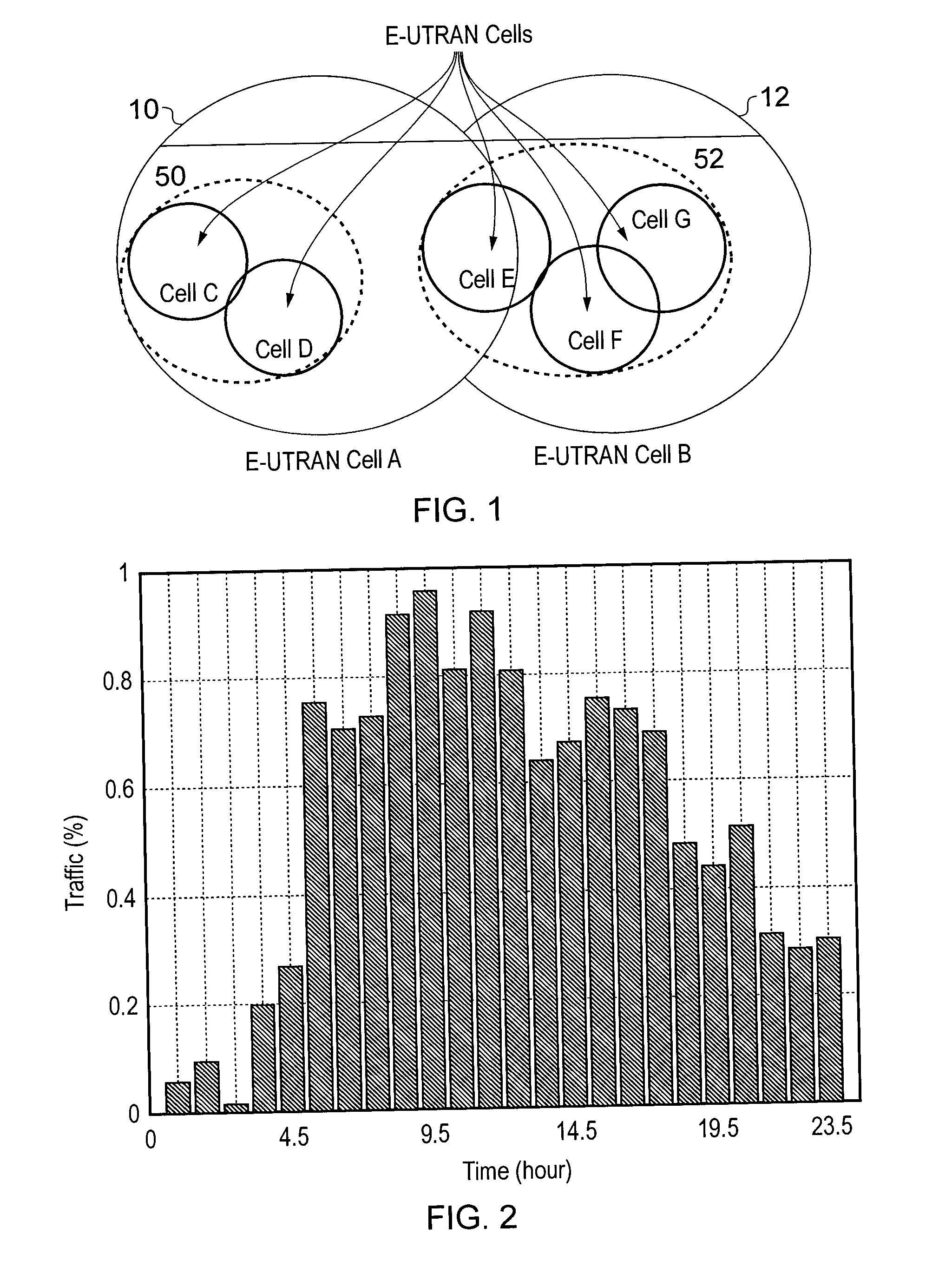Deactivation of micro cells in cellular wireless networks
a technology of cellular wireless network and micro cells, applied in the field of heterogeneous networks, can solve problems such as traffic load
- Summary
- Abstract
- Description
- Claims
- Application Information
AI Technical Summary
Benefits of technology
Problems solved by technology
Method used
Image
Examples
case 1
[0061] if the analyzing process is triggered by one micro cell that has traffic load lower than the threshold, then the SON server analyzes if the micro cell could be deactivated and seeks one or more neighbouring macro cells to be used as compensation cells. Here, compensation cells are macro cells that can provide coverage in the original micro cell's coverage area (the macro cells are also referred to as “underlay” cells). The compensation cells needs not lie within the investigation area.
case 2
[0062] if the analyzing process is triggered by one macro cell whose traffic load is lower than the threshold, then the SON server checks if there are any micro cells that are under the coverage of this low load macro cell and if so calculates a priority list of micro cells to be deactivated and analyzes whose traffic loads can be accommodated by the macro cell.
case 3
[0063] if the analyzing process is triggered by multiple cells (micro and / or macro) whose traffic loads are lower than the threshold, then the SON server calculates a priority list of micro cells to be deactivated and analyzes which ones can be turned to sleep mode in the next time period and what the corresponding compensation patterns are.
[0064]The “priority lists” referred to above can be combined into a single list. That is, micro cell candidates considered in both Case 2 and Case 3 can be used to form a combined micro cell candidate list, which is used to compile a combined prioritized list for the deactivation.
[0065]The overall cell ranking algorithm is shown in the flowchart of FIG. 4. The above Cases 1, 2 and 3 correspond to the three analysing processes which appear in the flowchart of FIG. 5. The detailed workflows corresponding to each analysis process are given by FIG. 6, FIG. 7 and FIG. 8 respectively.
[0066]Referring to FIGS. 4 and 5, the proposed cell ranking algorithm...
PUM
 Login to View More
Login to View More Abstract
Description
Claims
Application Information
 Login to View More
Login to View More - R&D
- Intellectual Property
- Life Sciences
- Materials
- Tech Scout
- Unparalleled Data Quality
- Higher Quality Content
- 60% Fewer Hallucinations
Browse by: Latest US Patents, China's latest patents, Technical Efficacy Thesaurus, Application Domain, Technology Topic, Popular Technical Reports.
© 2025 PatSnap. All rights reserved.Legal|Privacy policy|Modern Slavery Act Transparency Statement|Sitemap|About US| Contact US: help@patsnap.com



